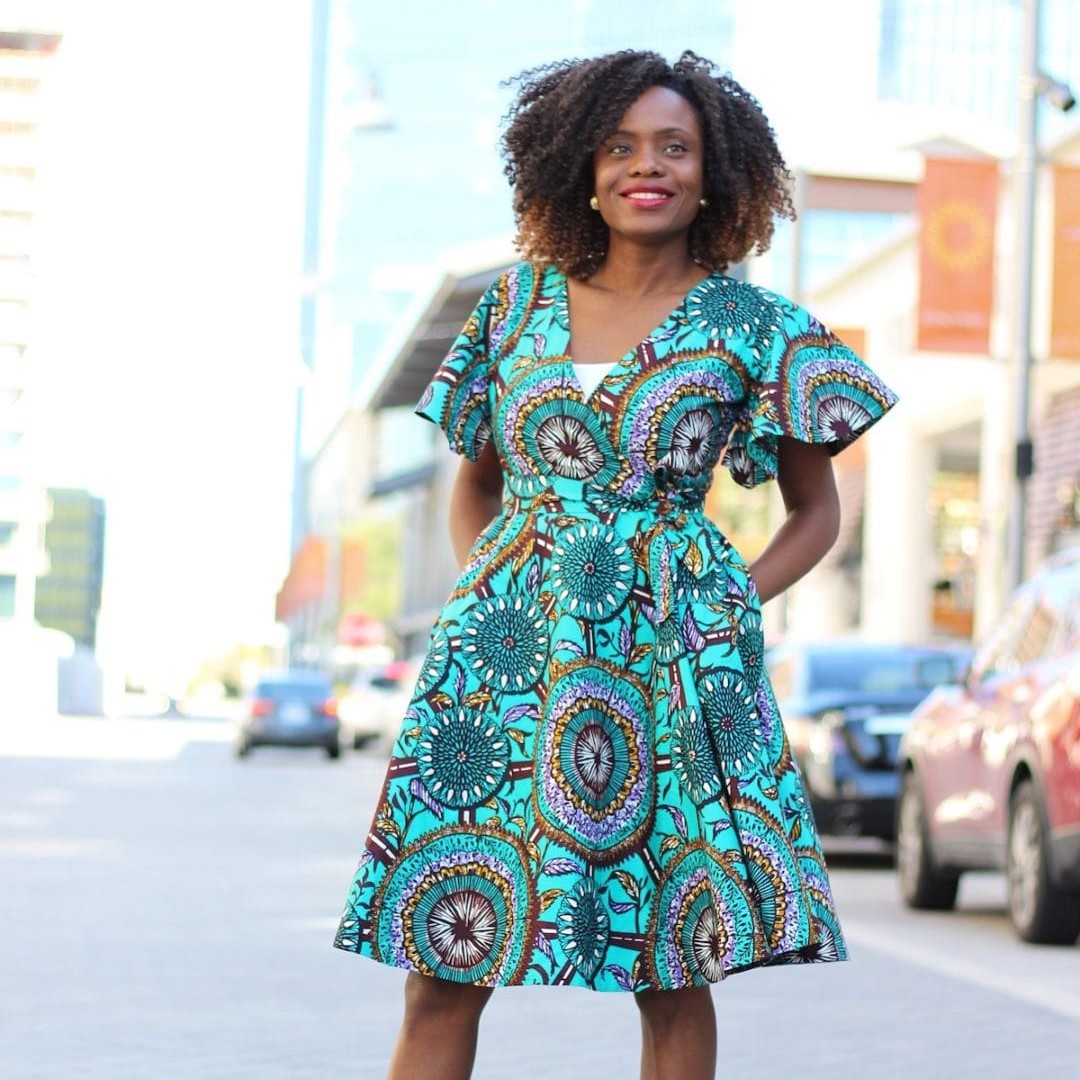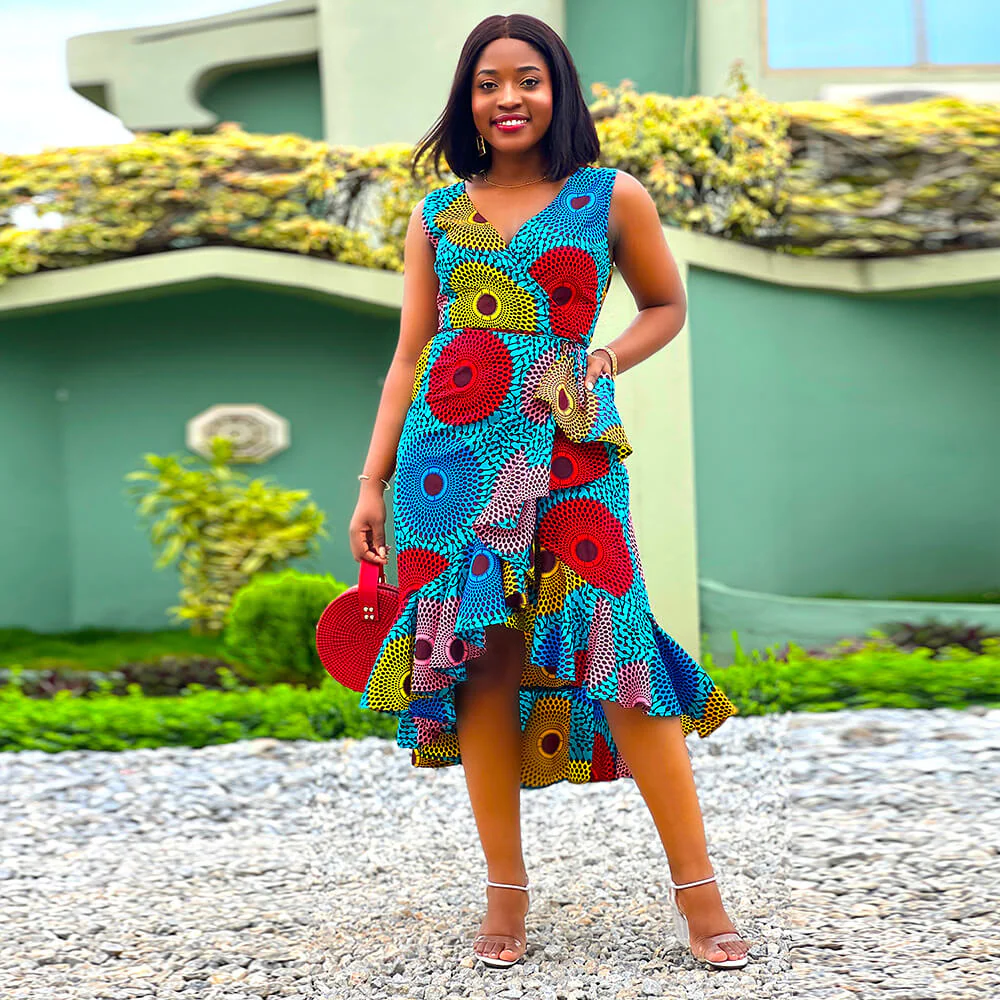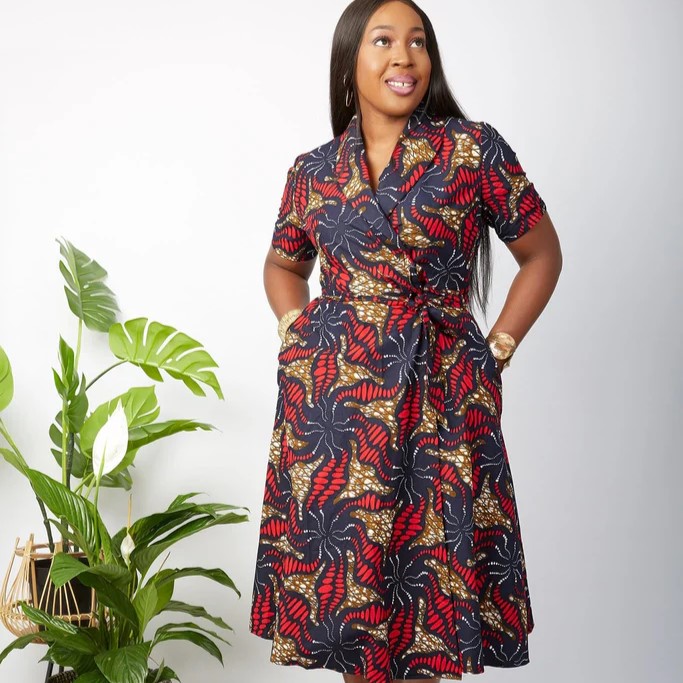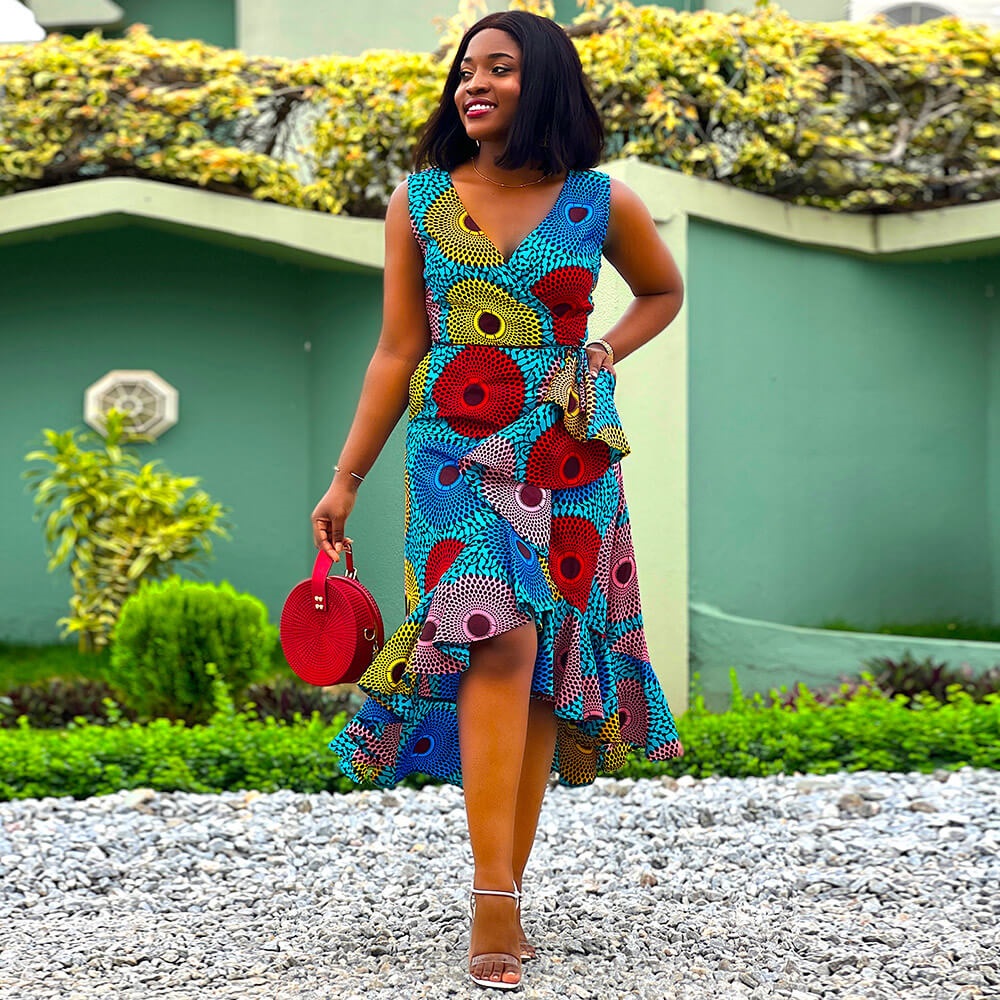An african wrap dress is more than just a piece of clothing—it’s a celebration of heritage, color, and craftsmanship. These vibrant garments combine traditional African textiles with modern silhouettes to create eye-catching fashion statements. Whether worn at weddings, festivals, or casual outings, the african wrap dress stands out for its bold patterns and elegant drape. In recent years, global interest in African fashion has grown significantly. As a result, designers now offer styles that honor cultural roots while appealing to international tastes. Consequently, women around the world are embracing this unique blend of tradition and trend. Moreover, influencers and celebrities frequently showcase how to style them. This visibility increases demand and drives online searches. Ultimately, choosing an african wrap dress means wearing confidence, culture, and creativity.
 Origins and Cultural Significance of the African Wrap Dress
Origins and Cultural Significance of the African Wrap Dress
The african wrap dress has deep roots in various African cultures. Many West African countries like Nigeria, Ghana, and Senegal have long used wrapped garments as daily wear. Traditional versions include the boubou, kaba, and iro and buba. These were made from hand-dyed fabrics such as adire, kente, and mud cloth.
Over time, the wrap style evolved into a modern dress format. Designers began using Ankara, wax prints, and batik fabrics. These colorful materials often carry symbolic meanings. For example, certain patterns represent unity, fertility, or strength. Colors also hold significance—red may symbolize passion, while gold reflects prosperity.
Women wear these dresses during rites of passage, religious events, and national holidays. They serve as expressions of identity and pride. Even in diaspora communities, the african wrap dress connects people to their ancestry. Therefore, it plays a vital role beyond fashion.
Symbolism Behind Fabric Patterns and Colors
Every print on an african wrap dress tells a story. Geometric shapes, animal motifs, and tribal symbols appear frequently. Some designs honor proverbs or historical events. Others reflect social status or marital condition.
For instance, Adinkra symbols from Ghana convey wisdom and values. “Sankofa,” which shows a bird looking backward, means “learn from the past.” Kente cloth patterns vary by region and clan. Each combination of color and weave has a name and meaning.
Even mass-produced wax prints carry cultural weight. Dutch-made fabrics inspired by Indonesian batik became popular in Africa. Local markets gave them new names and interpretations. Today, these stories live on through fashion. Wearing a meaningful pattern allows personal expression.
Regional Variations Across the Continent
Different regions produce distinct styles of african wrap dresses. In Nigeria, the peplum wrap dress is popular. It features a flared ruffle at the waist. This adds volume and movement. High necklines with lace detailing are common too.
Ghanaian styles often use kente or handwoven smock fabric. These are reserved for special occasions. The cuts tend to be looser and more flowing. Ethiopian dresses may include shawls or embroidered borders. North African versions sometimes blend Arab influences with local textiles.
East Africa embraces kitenge and kanga fabrics. These feature Swahili sayings printed along the border. Women gift them during ceremonies. Each area adapts the wrap concept to suit climate, customs, and aesthetics. Hence, diversity defines the african wrap dress.
 Key Features That Define a Quality African Wrap Dress
Key Features That Define a Quality African Wrap Dress
A well-made african wrap dress combines comfort, durability, and visual impact. One major feature is the wrapping mechanism. Most use ties, belts, or sashes on one side. These allow adjustable fit across body types. Some include hidden zippers for extra security.
Another key element is the fabric quality. Authentic Ankara or wax print resists fading and fraying. It feels thick but breathable. Look for tightly woven material without loose threads. Hand-printed versions show slight variations, which add authenticity.
Sleeve styles vary widely. Cap sleeves suit summer wear. Bell sleeves add drama. Off-the-shoulder cuts highlight collarbones. Necklines range from V-shapes to boatnecks. Pockets are rare but becoming more common in modern designs. All these details contribute to overall appeal.
Fit and Adjustability for Different Body Types
One advantage of the african wrap dress is its inclusivity. The wrap design naturally flatters many figures. Tying the sash at the waist accentuates curves. Adjustable sides accommodate busts, hips, and waists differently.
Plus-size women benefit from empire cuts or A-line shapes. These create flow and hide problem areas. Tall women can carry long maxi versions gracefully. Petite frames look best in knee-length or tea-length styles.
Some brands offer extended sizing. Others provide custom measurements. This ensures a perfect fit without alterations. Maternity versions exist too. They adapt to growing bellies while maintaining elegance. Therefore, the african wrap dress supports diverse bodies.
Neckline and Sleeve Design Options
Necklines play a big role in styling. Deep V-necks elongate the torso. Square necks give a retro feel. Halter styles support active movement. High collars offer modesty and regal flair.
Sleeves affect both comfort and formality. Sleeveless cuts keep cool in heat. Three-quarter sleeves add coverage without bulk. Dramatic puff sleeves enhance theatrical looks. Cold-shoulder styles mix exposure and elegance.
Designers often mix elements. A halter top might pair with a bell sleeve. An off-the-shoulder cut could include ruffled edges. These combinations increase versatility. As a result, wearers can match the dress to any event.
How to Style Your African Wrap Dress for Any Event
Styling an african wrap dress depends on the occasion. For weddings, choose rich colors like burgundy, emerald, or navy. Pair with matching headwrap (gele) and statement jewelry. Gold bangles, chandelier earrings, and layered necklaces complete the look.
Cocktail parties call for sleek silhouettes. Opt for solid-colored wraps with metallic accents. Add heels and a clutch. Keep hair styled up to show off earrings. Minimalist makeup highlights natural beauty.
Daytime events allow playful choices. Bright florals or cartoonish prints work well. Combine with sandals or wedges. Use tote bags and sun hats for flair. Children’s birthdays or garden parties welcome fun designs.
Casual Wear: Comfort Meets Culture
You don’t need a formal event to wear an african wrap dress. Everyday versions use softer fabrics and simpler cuts. Knee-length styles with pockets make practical outfits.
Pair with flat sandals or sneakers for errands. Add denim jackets or cardigans when it’s cool. Roll up sleeves for a relaxed vibe. Avoid heavy accessories during casual wear.
Choose washable fabrics for easy care. Machine-friendly Ankara holds up over time. These dresses become go-to pieces for school runs or coffee dates. Culture fits seamlessly into daily life.
Formal and Bridal Applications
Brides increasingly choose african wrap dresses for traditional ceremonies. These gowns use ivory, gold, or blush fabrics. Embellishments include beads, sequins, and lace overlays.
Some brides wear two outfits—one for civil and one for cultural rites. The wrap dress shines in the latter. It honors heritage and commands attention. Grooms may match with dashikis or agbadas.
Guests follow suit with coordinated colors. Families dress in the same fabric for unity. Photographers love the visual impact. Hence, formal events remain a prime setting for the african wrap dress.
 Caring for Your African Wrap Dress
Caring for Your African Wrap Dress
Proper care keeps your garment vibrant and long-lasting. Always check the label first. Most cotton-based wraps can be machine washed. Use cold water and gentle cycle. Turn inside out to protect prints.
Avoid bleach and harsh detergents. These fade colors quickly. Wash similar shades together. Separate darks from lights. Air drying is best. Hang in shade to prevent sun damage.
Iron on low heat if needed. Place a cloth between iron and fabric. Steaming removes wrinkles safely. Store folded or on padded hangers. Avoid wire hangers that stretch shoulders.
Washing, Drying, and Ironing Tips
Hand washing preserves delicate trims. Soak briefly in soapy water. Gently swirl without scrubbing. Rinse thoroughly until water runs clear.
Never tumble dry unless specified. Heat shrinks natural fibers. Lay flat on a towel to absorb moisture. Reshape before hanging.
For stubborn stains, spot clean early. Use mild soap and soft brush. Test on hidden area first. Preventative care reduces wear over time. Thus, maintenance extends the life of every african wrap dress.
Where to Buy Authentic African Wrap Dresses
Many online stores sell authentic pieces. Etsy hosts independent African designers. Their handmade items support small businesses. Amazon offers fast shipping and reviews. Look for sellers based in Africa for genuine materials.
Specialty boutiques like Afrikrea, Zivini, or ShopAfrica54 curate high-quality options. They partner directly with artisans. These sites include size guides and fabric details. Customer service helps resolve issues.
Local African markets and pop-up shops are great too. You can touch the fabric before buying. Vendors often offer tailoring services. Supporting local economies strengthens community ties.
Identifying Genuine vs. Mass-Produced Copies
Not all african wrap dresses are authentic. Some fast-fashion brands copy traditional designs without credit. These versions use cheap polyester. Prints look blurry or pixelated.
Real Ankara has a slightly stiff texture. It softens after washing. Edges may have brand stamps or selvedge lines. Handmade pieces show minor imperfections. These prove craftsmanship.
Ask about origin and production methods. Ethical brands share their story. They pay fair wages and protect intellectual property. Choosing authenticity respects culture and quality.
 Frequently Asked Questions About African Wrap Dresses
Frequently Asked Questions About African Wrap Dresses
Can I wear an african wrap dress if I’m not African? Yes. Appreciation differs from appropriation. Respect the culture behind the garment. Learn about its meaning. Support Black-owned businesses.
Are they suitable for all seasons? Yes. Lightweight cotton works in summer. Layer with cardigans or shawls in winter. Choose darker colors for colder months.
Do they come in maternity styles? Yes. Adjustable wraps fit growing bumps. Some include nursing access. Many women wear them postpartum too.
How do I tie the sash stylishly? Try front knots, side bows, or twisted wraps. Watch tutorials online. Practice makes perfect.
 Summary
Summary
The african wrap dress continues to grow in popularity thanks to its blend of culture, comfort, and style. It solves fashion needs while celebrating African heritage. From village markets to international runways, it adapts to diverse settings and tastes. Thanks to vibrant prints, evolving designs, and ethical production, there’s a version for every woman.
Whether bought for personal wear, gifting, or cultural events, each piece reflects pride and creativity. Proper care ensures lasting beauty and function. As fashion embraces diversity, the african wrap dress takes center stage. Its role goes beyond clothing—it represents identity and empowerment. Ultimately, the african wrap dress is more than a garment—it’s a statement of beauty, history, and self-expression.

